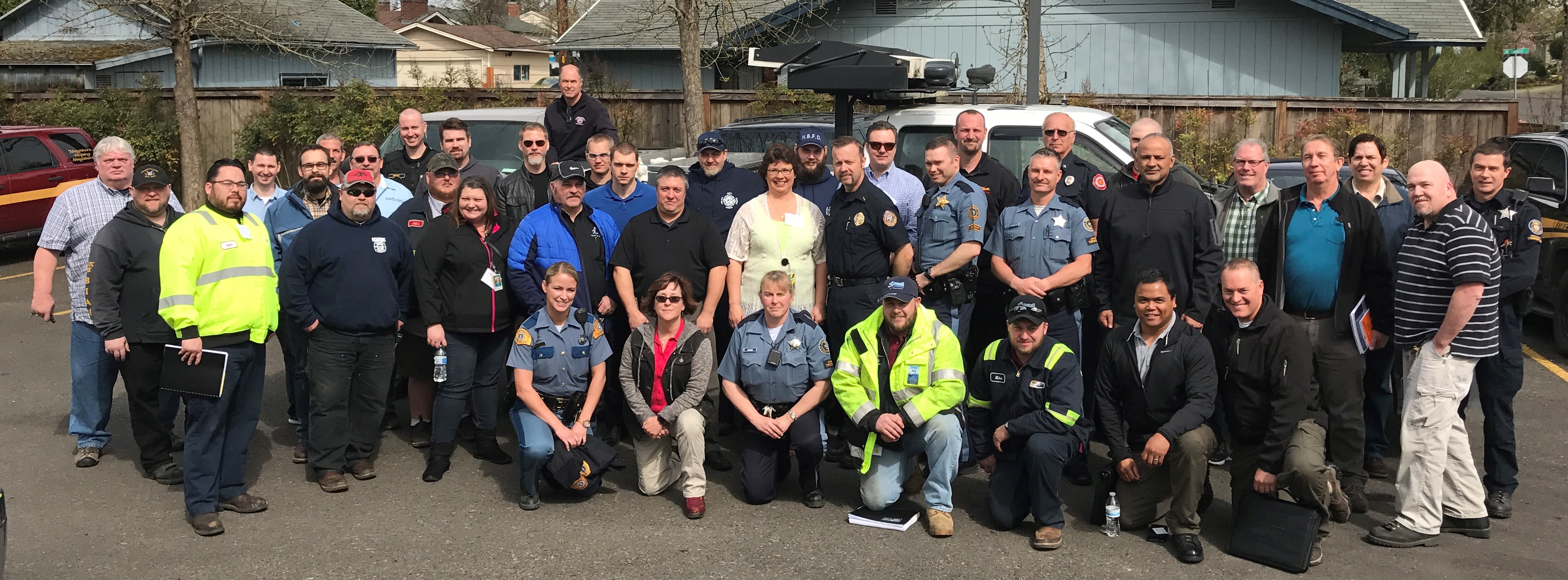Oregon’s Traffic Incident Management Program is dedicated to improving the on-scene safety of our first responders, reliability of our highways and livability of our communities by increasing outreach and awareness of TIM practices.
National TIM Responder Training Program
 Traffic Incident Management consists of a planned and coordinated multi-disciplinary process to detect, respond to and clear traffic incidents so that traffic flow may be restored as safely and quickly as possible. TIM Responder Training brings together personnel across the responder spectrum to build a stronger, more coordinated corps at the local and national level.
Traffic Incident Management consists of a planned and coordinated multi-disciplinary process to detect, respond to and clear traffic incidents so that traffic flow may be restored as safely and quickly as possible. TIM Responder Training brings together personnel across the responder spectrum to build a stronger, more coordinated corps at the local and national level.
What to know about this FREE training:
- It’s federally developed and delivered across the nation: Developed by FHWA and offered in partnership with AASHTO, the national TIM training curriculum is pilot-tested and based on best TIM practices and advanced standards. To date more than 450,000 TIM Responders across the U.S. have received the training.
- It’s customizable: Training can be delivered in its entirety or through select modules in almost any setting.
- It’s Oregon DPSST-Certified: Participants receive professional development credit.
To respond effectively as a team, we must train as a team. Trainers first began delivering TIM Responder Training throughout Oregon in early 2014. Since then, we have trained nearly 7,000 Oregon responders!
Register for a Class

Multiple response agencies work together to respond to highway incidents:
- Law Enforcement
- Fire
- Transportation
- Emergency Medical Services
- Towing
- Public Works
- Haz-Mat Disciplines
 Every day, first responders risk their lives to keep our highways safe and clear. Together, Oregon’s responder community can shape the next generation of Traffic Incident Management. Encourage your agency and community members to learn about Oregon’s TIM program and promote safe, quick clearance of roadway incidents.
Every day, first responders risk their lives to keep our highways safe and clear. Together, Oregon’s responder community can shape the next generation of Traffic Incident Management. Encourage your agency and community members to learn about Oregon’s TIM program and promote safe, quick clearance of roadway incidents.
Effective TIM is vital to our highway system and saves lives, time and money.
Saves Lives
Crashes and "struck-by" incidents continue to be a leading cause of on-duty injuries and deaths for public safety responders and support teams responding to highway incidents.
Saves Time
Traffic incidents are a contributing factor to congestion in the U.S. For every minute a freeway lane is blocked due to an incident, it results in 4 minutes of travel delay.
Saves Money
Less time spent in backups, fewer secondary crashes and fewer insurance claims means less financial loss due to highway incidents.